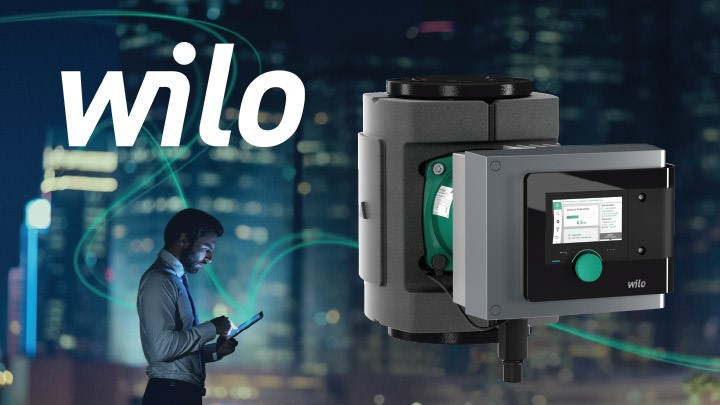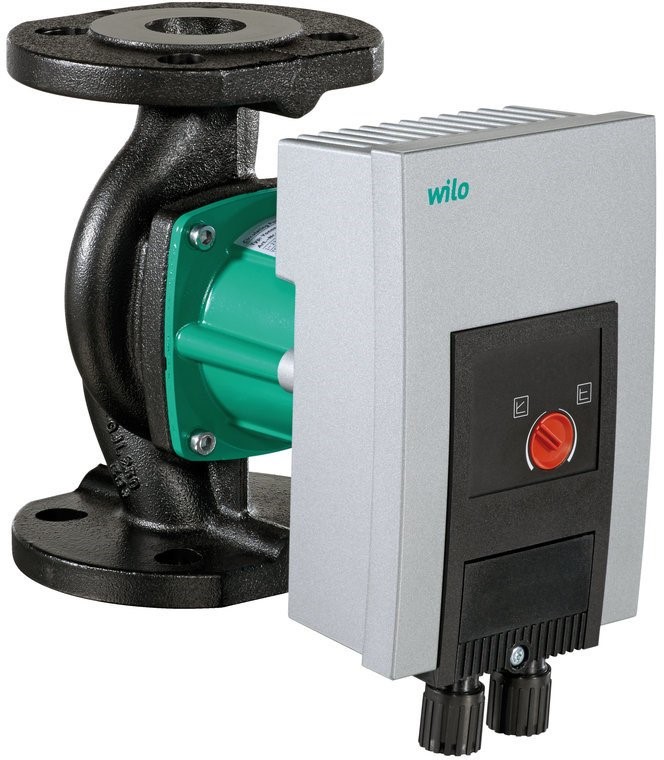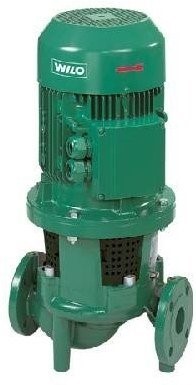 Thanks to circulation pumps, it is possible to effectively distribute liquids throughout the installation to the receivers and ensure correct operating parameters of the central heating. Check what types of central heating circulation pumps there are and how they are selected and installed.
Thanks to circulation pumps, it is possible to effectively distribute liquids throughout the installation to the receivers and ensure correct operating parameters of the central heating. Check what types of central heating circulation pumps there are and how they are selected and installed.
In this article:
- You will find information about the types, selection and installation of central heating circulation pumps
- You will learn about the advantages and disadvantages of glandless and glanded pumps and how to connect the pump to the power supply.
- You will learn the most important questions and answers regarding such issues as: signs of incorrect operation of the circulation pump, methods of preventing water hammer, etc.
What are you looking for?
Central heating circulation pump – types
There are two basic types of central heating circulation pumps - glandless and glanded. They differ primarily in their design, which determines the way the engine is mounted.
Glandless pump

Glandless pumps are equipped with a motor washed by the pumped liquid. The water that flows through the pump motor cools the drive unit, reducing the risk of overheating and overload. At the same time, in glandless pumps, the flowing liquid lubricates the rotor bearings, which reduces the workload associated with servicing and maintaining the device. These types of pumps are most often used in residential buildings.
Gland pump

Glandless and glanded circulation pumps – advantages and disadvantages
Glandless pumps ensure faster water flow, which allows the use of pipes with smaller cross-sections, and thus reduces the cost of the heating installation. In addition, there is less water in a system with a glandless pump, which allows the system to respond faster to temperature fluctuations and is easier to regulate.
Glandless pumps do not require shaft seals, and the flowing liquid washes the motor and bearings, ensuring their long life. These pumps can be installed in a vertical or horizontal position, but the pump shaft must always be placed in a vertical position. Glandless pumps are used primarily for lower capacities - including: in residential buildings.
Glanded pumps are used for hydraulic installations requiring higher efficiency and lifting height - e.g. in industry and large commercial facilities. The overall efficiency of glanded pumps is much higher than that of glandless pumps. They are much better suited for pumping aggressive media and cooling water. Glanded pumps are equipped with a shaft sealed against the atmosphere by means of a stuffing box or a slip ring, and their motor is not washed by the flowing medium. Dry operation of the pump is unacceptable, as it leads to immediate destruction of the sealing surfaces. Pumps of this type cannot be installed with the motor and terminal boxes facing downwards. Any other position is allowed.
Glandless circulation pumps
| Advantages | Defects |
|---|---|
| They ensure faster water flow | For use only with lower capacities |
| They reduce installation costs | The shaft must always be placed in a horizontal position. |
| They are easier to adjust | They are less efficient than glanded pumps |
| They respond faster to temperature changes | They are not suitable for pumping aggressive media |
| They are easier to use | |
| The shaft bearings and motor are liquid cooled and lubricated | |
| They work more quietly |
Glanded circulation pumps
| Advantages | Defects |
|---|---|
| Used for installations with higher capacities | More difficult to operate |
| They can transport aggressive media and cooling water | Risk of seal damage and pump seizure when running dry |
| Wide installation possibilities depending on the pump version | The need for regular lubrication of the bearing |
| They are much more efficient than glandless pumps |
Which circulation pump should I choose?
Circulation pumps are selected primarily on the basis of two parameters - the water flow that the pump must pump (Q/V) and the lifting height (H). Based on these parameters, the efficiency of the circulation pump should be selected (in m3/h). Efficiency determines how much water the pump will be able to deliver to the heating system per hour.
In addition, you should check the maximum pressure that can occur in the riser and adjust the operating pressure of the central heating circulation pump to it. The temperature range in which the pump can operate, as well as the noise it generates, are also important - the larger the pumps, the greater the noise generated.
If we choose a pump that is too small for the needs of the hydraulic system, the water flow will be insufficient, which will limit the comfort of operating the heating system in winter, reduce the pump's life and the time of its trouble-free operation, and may lead to air in the system. If we choose a pump that is too large for the needs of the hydraulic installation, the pump will generate excessive noise in the installation and will significantly increase the costs of electricity consumption.
When selecting a central heating circulation pump, pay attention to the hydraulic requirements of the installation . It is worth choosing a pump model that will ensure the lowest possible electricity consumption and will be equipped with an electronic system that will automatically adjust the pump operating parameters to changes in the hydraulic system. An example of such a system is the Electronic Stepless Performance Control System, which can be found, among others, in: in glandless Wilo-Stratos Pico circulation pumps. By choosing modern, energy-saving pumps equipped with intelligent systems, we will ensure not only optimal operating parameters and low electricity consumption, but also increased unit life.
Check out Wilo circulation pumps in the Onninen offer
Installation of a circulation pump for central heating installations - what do you need to know?
When installing a circulation pump in a central heating system, you must decide whether the implementation will take place in the supply or return pipe. It is necessary to determine whether the pumped heating medium will not reach excessive temperature or pressure in relation to the pump's operating parameters, and also whether the pressure and temperature will be within the lower limits of the inflow in the pump suction port. This issue is crucial, especially in terms of reducing the risk of cavitation in low central heating installations - e.g. in single-family houses.
The circulation pump must be installed so that the medium flow direction is consistent with the marking on the pump body. Please also remember that some pumps cannot be adjusted from top to bottom.
Do not forget to properly bleed the pump and the entire hydraulic system. If the pump is equipped with automatic venting, it cannot be used to vent the hydraulic system. The circulation pump must be installed in a section of the pipeline between two shut-off valves, which will allow the pump and the section of the installation to be easily isolated during maintenance operations.
Pump manufacturers precisely define the basic principles of assembly and positioning of their products. The pump installation must be based on these recommendations. In addition, the pump should be installed in an accessible place that will allow easy monitoring of its operation as well as service and maintenance activities.
Check out Wilo circulation pumps in the Onninen offer
Power connection
Central heating circulation pumps can be installed both on the supply and return lines, and the only limitation in this respect is the installation height of the expansion vessel in an open system.
If the pump will be mounted on the feed, then the vessel must be installed no closer than 0.3 m above the highest point of the hydraulic system circulation. However, if the pump is mounted on the return, the vessel must be mounted at least 70% of the pump lifting height above the highest point of the hydraulic installation. In open installations, when it is difficult to raise the vessel to a sufficient height above the highest point, it is recommended to install the pumps on the return pipe of the installation. Additionally, such installation will ensure that the pumps operate at a lower medium temperature and protect the devices in the event of water leakage. Currently, only modern energy-saving circulation pumps can be found on the market, which - in accordance with the latest EU directives - have significantly reduced energy consumption based on the distribution of the heat medium. For this reason, most pumps provide the so-called night mode function , which reduces the pump's energy consumption at night. However, this function only works when the pump is mounted on the power supply.
Questions & Answers
What are the signs of incorrect operation of the circulation pump?
Signs of improper operation of the circulation pump are most often sounds similar to the sound of a hammer hitting a pipe. Such symptoms are most often caused by water hammer, which is a sudden increase in pressure caused by mass inertia. This is caused by a sudden change in the velocity of the medium in the piping system. According to research, 80% of failures in water supply networks are caused by water hammer.
What are the methods of preventing water hammer?
To protect the installation against water hammer, pipe cross-sections must be selected correctly and an appropriate type of safety device must be installed, which will be mounted as close as possible to the cross-section of the pipe where a sudden increase in pressure may occur. In addition to non-structural measures, water hammer can be protected against by changing the system configuration and by counteracting the phenomena initiated by introducing devices and mechanisms into the system that keep the water mass outside the system.
What is the maintenance of the circulation pump installation?
Maintenance of a central heating system with a circulation pump consists of cleaning the pump turbine blades and channels, as well as checking and possibly replacing the pump filter. Maintenance activities for installations are based on checking insulation, anti-corrosion protection, leaks and checking the pressure at the expansion vessel. Maintenance of the circulation pump should be carried out at least once a year before the start of the heating season.
What are the symptoms of a damaged pump?
Typical signs of a damaged pump include excessive engine overheating. This may be caused by, among others: fluctuations in voltage and power supply, loss of insulation resistance, lack of pump ventilation, too low or too high flow, excessive speed, increased friction, too high viscosity or density of the medium or too high ambient temperature.
How to bleed a circulation pump with horizontal connections?
When installing a glandless pump on a horizontal pipeline, there may be problems with venting the body. The most common reason for this situation is the presence of an air cushion from the pump body to the non-return valve, which effectively prevents the pump from drawing water and pushing the air bubble through. In such applications, we recommend installing check valves no closer than 5x the pipeline diameter (for 1" it will be 10 cm) from the pump discharge port. In most cases, such an installation allows for effective flooding of the pump hydraulics with water and then effective pushing of air to the air vents or air separators.
How many circulation pumps should there be in the installation? When should two pumps be installed?
The number of pumps in the installation will depend on its size and diversity. In the case of radiator heating in a residential building, one circulation pump is most often used to distribute the medium from the boiler / node to the receivers. In the case of mixed systems with underfloor heating and radiator heating, it is recommended to use two pumps. One so-called The boiler one, which will be used for heating radiators and, for example, loading the hot water tank, and the second one, which will work for the surface heating circuit. In strategic facilities where we cannot allow interruptions in heat supply, it is also recommended to use dual systems, i.e. installing pumps in a system of primary pump + reserve pump. This will protect the user, e.g. a hotel user, from complaints from residents in the event of a pump unit failure.